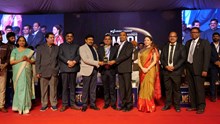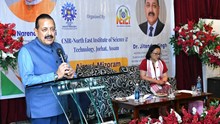
As the world gathers this Earth Day under the powerful banner of “Our Power, Our Planet”, we are reminded that the path to climate justice is not just technological—it is deeply human. The call to triple global renewable energy generation by 2030 cannot be answered without recognizing and investing in the power of women. They are scientists, entrepreneurs, farmers, policymakers, and activists—but too often, their leadership in the climate space is invisible, undervalued, or outright excluded.
A growing body of evidence shows that women are not only disproportionately affected by climate change but are also uniquely positioned to lead us toward resilient, inclusive solutions. From deploying solar mini-grids in rural India to shaping international climate law, women are already on the frontlines of clean energy transitions. What they need now is recognition, representation, and resources.
Gatekeepers, Not Gaps, Are Holding Women Back
Women are already driving some of the most effective clean energy transitions across India and the world. They’re installing solar panels in remote villages, designing electric mobility plans in urban centers, and running climate-resilient farming projects that cut emissions while improving livelihoods. But the systems that fund, recognize, and scale clean energy? Still overwhelmingly male.
In fact, women make up less than 12% of leadership in renewable energy. And women-led climate initiatives receive less than 2% of global climate finance. This isn’t just a gender gap—it’s a growth bottleneck. When we exclude women, we slow down the very solutions we’re trying to scale.
As part of an ongoing project, my colleagues and I interviewed 20 women climate leaders in India—scientists, entrepreneurs, policymakers, and activists—and the same story repeats itself: they’re doing the work but not being seen, funded, or invited into decision-making spaces.
A climate finance strategist we spoke with said that she’s been to countless boardrooms with male investors who nod approvingly but never sign the cheque.
We cannot achieve the goal of tripling clean energy generation without confronting this inequity. The future of energy must be feminist, collaborative, and just. The irony is, women have already proven themselves in climate leadership. India’s most iconic environmental movements—the Chipko Andolan, Narmada Bachao Andolan—were led by women. Today, groups like Warrior Moms and thousands of local women’s self-help collectives are shaping how air pollution, water management, and energy access are tackled on the ground.
We’re also missing out on innovation. The renewable energy sector is evolving rapidly, but so are the gendered gaps in who gets access to emerging tools like AI-powered energy modeling or carbon markets. Climate tech is the next frontier—and right now, most of the gatekeepers are men. If women aren’t in those rooms, we risk designing a future that leaves half the world out. They don’t need handouts. They need a seat at the table.
How do we move from admiration to action?
Not just policies that vaguely mention “gender inclusion.” We need actual investment—money, mentorship, leadership pipelines—that moves women from the margins to the center of climate innovation. We need climate ministries and renewable energy boards to set gender equity targets, not just in hiring, but in funding allocation. We need to stop treating women-led projects as feel-good side stories and start treating them as central strategies for scaling clean energy.
Because here’s the truth: if you want more solar panels on rooftops, more women need to be in procurement. If you want electric buses in cities, women need to be designing transit systems. If you want climate startups to succeed, women need access to pitch rooms. Every climate goal is also a gender equity goal—whether we admit it or not.
Who should care?
Anyone who actually wants us to hit that 2030 clean energy target. Anyone who’s serious about building a more resilient, inclusive future. Anyone tired of climate strategies that sound great on paper but fall apart in practice because they ignore the real-world power dynamics of who leads and who’s left out.
This Earth Day, let’s stop pretending we can power the planet without all its people. Let’s stop sidelining the very power that’s been holding up our communities all along.
Because if we truly believe in “Our Power, Our Planet,” then it’s time to act like we mean it. Let Earth Day 2025 be a turning point—not just for clean energy, but for who gets to lead it.
(By-Devleena Chatterji, Research and MEL Lead at Climate Asia)
















